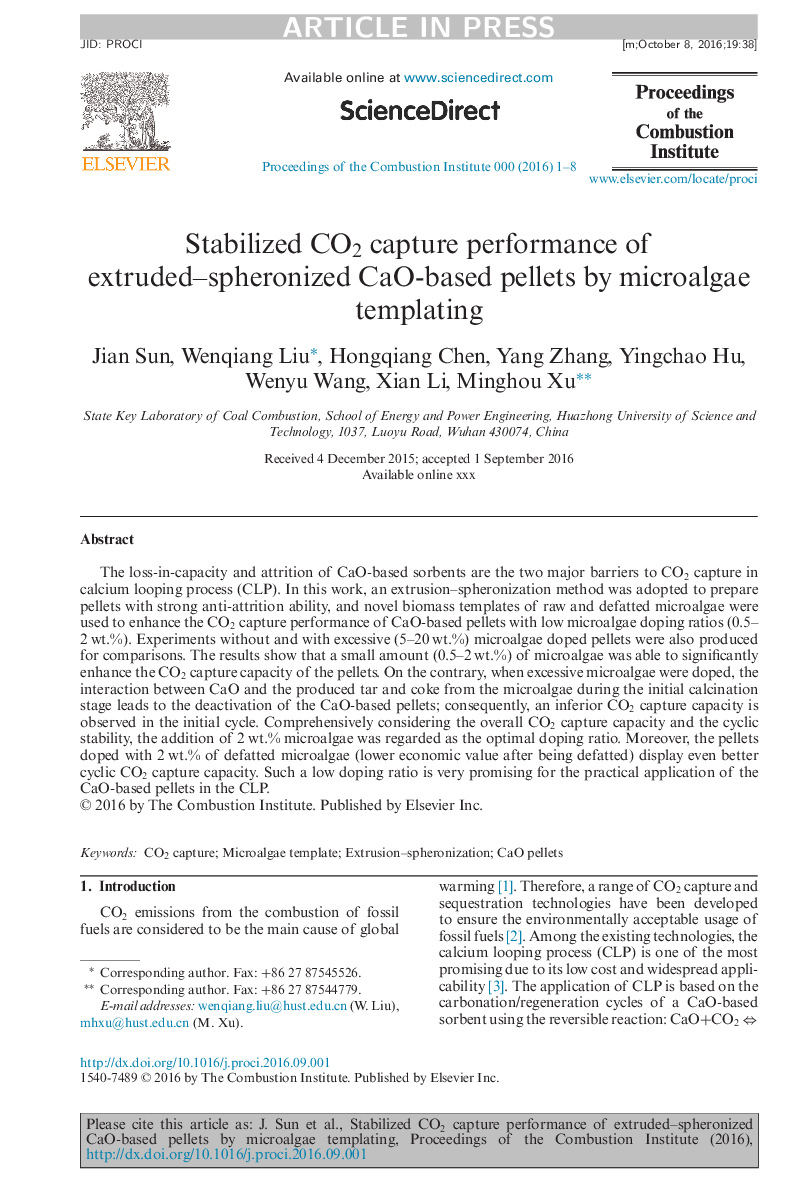| Article ID | Journal | Published Year | Pages | File Type |
|---|---|---|---|---|
| 4915457 | Proceedings of the Combustion Institute | 2017 | 8 Pages |
Abstract
The loss-in-capacity and attrition of CaO-based sorbents are the two major barriers to CO2 capture in calcium looping process (CLP). In this work, an extrusion-spheronization method was adopted to prepare pellets with strong anti-attrition ability, and novel biomass templates of raw and defatted microalgae were used to enhance the CO2 capture performance of CaO-based pellets with low microalgae doping ratios (0.5-2Â wt.%). Experiments without and with excessive (5-20Â wt.%) microalgae doped pellets were also produced for comparisons. The results show that a small amount (0.5-2Â wt.%) of microalgae was able to significantly enhance the CO2 capture capacity of the pellets. On the contrary, when excessive microalgae were doped, the interaction between CaO and the produced tar and coke from the microalgae during the initial calcination stage leads to the deactivation of the CaO-based pellets; consequently, an inferior CO2 capture capacity is observed in the initial cycle. Comprehensively considering the overall CO2 capture capacity and the cyclic stability, the addition of 2Â wt.% microalgae was regarded as the optimal doping ratio. Moreover, the pellets doped with 2Â wt.% of defatted microalgae (lower economic value after being defatted) display even better cyclic CO2 capture capacity. Such a low doping ratio is very promising for the practical application of the CaO-based pellets in the CLP.
Keywords
Related Topics
Physical Sciences and Engineering
Chemical Engineering
Chemical Engineering (General)
Authors
Sun Jian, Liu Wenqiang, Chen Hongqiang, Zhang Yang, Hu Yingchao, Wang Wenyu, Li Xian, Xu Minghou,
